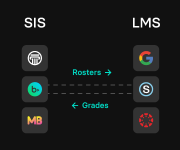|
|
 
| |
 |
| (Jonathan Kitchen/Getty Images) |
A number of New York educators and experts are criticizing the Numeracy Briefs that were created by TeachingWorks and designed to aid teachers as part of the New York Numeracy Initiative. In this opinion piece, Manhattan Institute fellow Danyela Souza Egorov says critics believe the guidance contradicts established math pedagogy and expert advice and relies on limited research while ignoring the broader science of math.
|
|
|
The STEM gender gap is re-emerging, with girls' scores in eighth-grade math and science declining more sharply than boys' since the pandemic. This widening gap starts as early as middle school and extends into high school, where girls are underrepresented in advanced STEM classes. Girls comprise only 34% of AP computer science classes in high school, which correlates with women holding just 35% of STEM jobs in the US.
|
|
|
 | Seamlessly Sync Your SIS and LMS
Flow keeps classes, rosters, assignments, and grades aligned across your Student Information System and Learning Management System, reducing manual work and keeping data accurate.
See how Flow works. |
|---|
| |
|
|
 
|
An all-day ban on cellphones has significantly decreased student distractions at North Fort Myers High School in Florida, teachers and students say. Math teacher Tona Cooksey says she's "actually seen an improvement in scores, in retention and in emotional connection. They are much more willing to get up, move about the room. I love it." Eleventh-grader Justin Stevens says the policy "has many more benefits than it has cons. I like that everyone's focused."
|
|
|
Tier 1 differentiation helps address a classroom's diverse needs, but using small groups rather than whole group instruction allows teachers to additionally tailor groups based on students' skill levels, languages and learning preferences. "Station rotation strengthens Tier 1 instruction, reducing the need for Tier 2 and Tier 3 interventions. When additional support is required, the same small group structure can be used to provide Tier 2 and Tier 3 intervention in the general education classroom," Caitlin Tucker, a trainer, author and speaker, writes.
|
|
|
 | The Future of Retail: What's Coming in 2026
AI personalization and seamless customer experiences defined 2025, but the retail landscape is about to shift again. Join us on November 5th for a fast-paced webinar where industry experts reveal the top trends and technologies shaping 2026. Discover how to stay ahead, boost productivity, and deliver next-level shopping experiences. Register now! |
|---|
| |
|
|
 
| |
 |
| (Pixabay) |
AI literacy requires students to do more than prompt chatbots, and computer science education can give them an understanding of the data, algorithms and models that underpin AI, writes Jake Baskin of the Computer Science Teachers Association. Professional development, learning communities and curriculum support for computer science educators can help them guide students through evolving concepts and technologies, Baskin notes.
|
|
|
 
|
AI tools can help teachers efficiently personalize instruction for diverse learners, writes elementary school tech coach Debbie Tannenbaum, describing how to incorporate the technology into the Universal Design for Learning framework. Tannenbaum details how educators can quickly tailor activities and prompts to foster engagement, representation and action.
|
|
|
Students with special educational needs and disabilities are significantly more likely to be absent from school than their peers. Higher suspension rates for these students compound persistent absenteeism. High rates of absence and suspension among students with special educational needs have lasting consequences, increasing the risk of dropping out of school without a diploma and limiting future employment prospects.
|
|
|
| Management, Policy & Research |
| |
 |
| (Elena Medoks/Getty Images) |
School districts nationwide are grappling with declining enrollment, prompting creative solutions. In Alabama, lawmakers hope expanding the "Don't Say Gay" law will address this issue, though officials cite factors such as the CHOOSE Act and homeschooling. Maryland's Montgomery County attributes declining enrollment to lower birthrates, expecting a loss of over 6,000 students in six years. Utah faces similar trends, with Superintendent Molly Hart noting demographic shifts and increased school choice. Meanwhile, Florida's Broward County Public Schools faces an $85 million budget deficit following a drop of almost 10,000 students, potentially because of immigration enforcement.
|
|
| | | |
